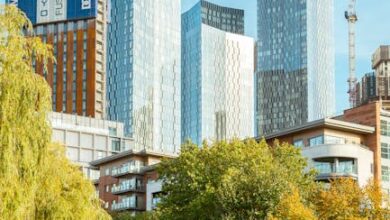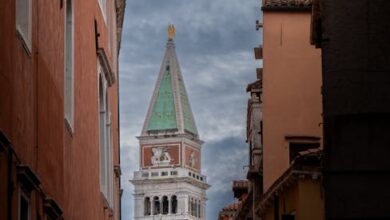From Vision to Reality: A City Reimagined

Ever noticed how a simple name change can suddenly give something an entirely new weight, a fresh identity? It’s not just about semantics; it’s about perception, purpose, and often, a powerful declaration of intent. We see it in major corporations rebranding, in products evolving, and now, we’re seeing it with an entire city in the making. Egypt’s ambitious urban marvel, previously known to the world as the ‘New Administrative Capital,’ has officially undergone such a transformation. It will now be universally referred to as simply ‘The New Capital.’
This isn’t just a bureaucratic update; it’s a deliberate, strategic step by the Administrative Capital for Urban Development (ACUD) that signals a maturation, a solidified vision for what this colossal project represents for Egypt and the wider region. It’s a move that redefines not just a name, but the very essence and future aspirations tied to this groundbreaking urban endeavor. Let’s delve into what this rebranding truly signifies and the grand narrative behind this burgeoning city.
From Vision to Reality: A City Reimagined
The journey of Egypt’s flagship urban project began in 2015, under the visionary leadership of President Abdel-Fattah Al-Sisi, with construction commencing just a year later. The initial premise was clear and urgent: to alleviate the immense demographic pressure on Cairo, a historic metropolis bursting at its seams. Cairo, for all its timeless charm and vibrant energy, faces undeniable challenges of overcrowding, traffic congestion, and infrastructure strain.
The solution? A brand-new city designed from the ground up, built on principles of smart, sustainable urban living. And what a vision it is. The New Capital isn’t merely a collection of buildings; it’s a meticulously planned ecosystem. Imagine vast residential districts catering to diverse needs, state-of-the-art educational institutions, and world-class healthcare facilities. This isn’t just about functionality; it’s about creating a superior quality of life for its future inhabitants.
Beyond the essentials, the city boasts an array of impressive features that paint a picture of modern luxury and forward-thinking design. Artificial lakes shimmer alongside sprawling green spaces, while 40,000 hotel rooms are poised to welcome visitors and business professionals alike. Plans include a major theme park, promising entertainment and leisure, and a commitment to green energy with solar farms spanning an astonishing 91 square kilometers – a powerful statement of environmental responsibility.
Connectivity is also at the heart of its design. An electric railway is set to seamlessly link The New Capital with Cairo, ensuring accessibility and fostering economic integration. Furthermore, a new international airport underscores its ambition to become a global hub, facilitating trade, tourism, and diplomatic relations. This isn’t just a new city; it’s a testament to Egypt’s commitment to embracing the future.
More Than a Name: Branding a New Era of Governance and Urbanism
The shift from ‘New Administrative Capital’ to ‘The New Capital’ is far more than a stylistic choice; it’s a powerful branding exercise. The removal of ‘Administrative’ suggests a move beyond merely being a governmental relocation project. It subtly but firmly asserts the city’s identity as a complete, self-sustaining, and thriving urban center, rather than just an office complex for the government.
At its core, The New Capital serves as Egypt’s new administrative hub. This is where the machinery of modern governance will operate, housing government ministries, the parliament, and foreign embassies. Relocating these critical institutions is designed to streamline operations, enhance efficiency, and project an image of a forward-thinking, organized state. Iconic national landmarks already stand tall within its boundaries, such as the magnificent Misr Mosque and the awe-inspiring Cathedral of the Nativity of Christ, underscoring the nation’s rich cultural and religious heritage within a modern context.
But the city’s ambition extends far beyond governmental functions. Its residential neighborhoods are designed to attract a diverse population, fostering a vibrant community life. Universities are being established, cultivating the next generation of Egyptian talent. And perhaps most symbolically, a bustling central business district, anchored by Africa’s tallest tower, stands as a beacon of economic prowess and investment potential. This is a city built to attract, innovate, and lead.
From Vision to Identity: A Symbol of Progress
This rebranding effort truly marks another significant step in Egypt’s ongoing efforts to position the city as a definitive symbol of modern governance and urban expansion. It speaks to a level of confidence and establishment. When a nascent project sheds its descriptive label for a singular, assertive title like ‘The New Capital,’ it suggests a maturity, a transition from an idea to a tangible, recognizable entity. It’s no longer just a ‘new *administrative* thing’; it’s *the* New Capital – a statement of permanence and unique identity.
For international partners and investors, this clarity and singular identity can foster greater trust and recognition. It simplifies communication and strengthens the city’s brand on the global stage. It’s a signal that this isn’t a temporary solution but a long-term commitment to urban excellence and national development. This move consolidates its status as a cornerstone of Egypt’s future.
The New Capital: A Testament to National Ambition
The journey of The New Capital, from its announcement to its ongoing development and now its official renaming, is a powerful narrative of national ambition and urban foresight. It represents a bold leap into the future, a strategic endeavor to not only solve immediate urban challenges but also to craft a legacy of modern governance, sustainable living, and economic prosperity.
The official adoption of ‘The New Capital’ is more than a change in nomenclature; it’s a declaration. It’s Egypt saying, “This is our future, fully realized and unequivocally named.” As this city continues to grow, attracting residents, businesses, and international attention, its simplified, powerful name will undoubtedly help etch its identity firmly into the global consciousness, positioning it as a significant player in the landscape of 21st-century urbanism and a vibrant testament to Egypt’s progressive vision.





